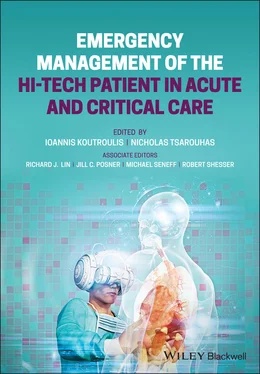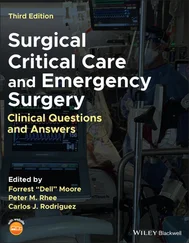An estimated 5–25% of patients who undergo bariatric surgery will have complications. Most surgical complications will occur in the immediate postoperative period, perhaps while the patient is still in the hospital. These include anastamotic leak, pulmonary embolism, and bleeding. We will not discuss these complications in depth in this chapter.
Delayed complications occur in an estimated 10% of patients who undergo weight loss surgery. Patients may present to the emergency department (ED) with these delayed complications. Complications may be related to the device itself (if one is placed), to intermediate or late surgical complications (such as bowel obstruction), or they may relate to gastrointestinal (GI) symptoms that occur as a result of changing the GI tract anatomy ( Table 3.1). Practitioners treating patients who have had bariatric surgery must be alert to the fact that these patients can have GI disorders that are not secondary to their weight loss surgeries as well. Any patient with significant abdominal symptoms who has had bariatric surgery in the past should be evaluated by a surgeon experienced with such patients. Such consultation may be helpful in directing the most appropriate workup and management, and early consultation is essential in those cases where a prompt return to the operating room is indicated. The main bariatric surgery complications with timing, symptoms, diagnostics and treatment are summarized in Table 3.2.
Table 3.1 GI symptoms and associated causes.
| DiarrheaMalabsorptionBile saltsDumping syndromeFood intoleranceLactose intoleranceIrritable bowel syndromeBacterial overgrowthInfectionVomitingOvereatingNoncompliance with bariatric surgery dietObstructionMarginal ulcersStomal stenosisGastric band slippage with gastric prolapseRoux stasis syndromeExcessively tight gastric bandGallstonesGastroesophageal refluxConstipationDehydration due to decreased fluid intakeIron supplementationMultivitamin supplementation |
All patients who present with abdominal pain, nausea, vomiting, or diarrhea after having weight loss surgery should have a full exam, with close attention to signs of dehydration and shock. Tachycardia is especially worrisome, as it may indicate dehydration, sepsis or infection (particularly in the setting of a postoperative leak), GI bleeding, pulmonary embolism, or even acute myocardial infarction. Intravenous access and full laboratory evaluation, including complete blood count, complete metabolic panel, and urinalysis, should be obtained. Blood gas, as well as stool hemoccult, may help acutely ill patient. The patient should be fluid resuscitated, antiemetics should be given for nausea and vomiting, and abdominal imaging should be considered. If there is concern for ileus or obstruction, abdominal radiographs should be performed. In a patient who is particularly toxic, or who has persistent abdominal tenderness, or nausea or vomiting after an antiemetic and fluids, abdominal CT or UGI study may need to be performed. This would help identify obstruction or staple line leak. Rapid weight loss can be a risk factor for development of gallstones. All bariatric surgery patients who have colicky abdominal pain and vomiting with no other identified cause should be evaluated for gallstones.
In the first month after surgery, patients who have undergone RYGB may present with nonspecific signs of infection: tachycardia, mental status changes, and dyspnea, with or without abdominal pain. This should immediately raise concern for anastomotic or staple line leak. Full labs, fluid resuscitation, and broad‐spectrum antibiotics should all be initiated, along with abdominal imaging via UGI or abdominal CT. Anastomotic leak is the most serious complication patients may develop after RYGB or sleeve gastrectomy and requires urgent surgical consultation and operative exploration.
Patients who have had RYGB are also particularly at risk for the development of marginal ulcers. These occur in 5–10% of patients and present several months after surgery. Patients classically present with epigastric abdominal pain, nausea and vomiting, dyspepsia, or signs of an upper GI bleed. Perforation may also occur, with signs and symptoms of infection and sepsis. Stable patients may respond to IV fluids, sucralfate, and a proton pump inhibitor, while more acutely ill or hemodynamically unstable patients will require aggressive fluid resuscitation and packed red blood cell transfusion, along with emergent endoscopy. RYGB patients may also develop stomal stenosis in the first months after surgery. This presents as epigastric pain after eating and may also be accompanied by vomiting, initially only of solids, and ultimately of all food and liquids. Stomal stenosis is identified via UGI or endoscopy and can be corrected with endoscopic balloon dilation the majority of the time.
LSG and LAGB are technically more simple surgical procedures than RYGB and are, therefore, associated with fewer complications than RYGB. Patients do not experience dumping syndrome, stomal ulceration, nutritional deficiencies, or small bowel obstruction in the way that they may after RYGB. LSG does carry the risk of leaking at the staple line. This occurs in less than 5% of patients, typically in the first month after the weight loss surgery. Patients may present with infection or abdominal pain and will have the staple line leak identified on UGI or abdominal CT.
Table 3.2 Bariatric surgery complications.
| Complication |
Timing |
Weight loss procedure |
Signs and symptoms |
Diagnostic testing |
Management |
| Small bowel obstruction |
Within 1 month |
RYGB |
nausea/vomiting and abdominal pain |
Abdominal Xray |
Nasogastric decompression and fluids |
| Staple line leak |
Within 1 month |
RYGB and LSG |
Abdominal pain, tachycardia, and sepsis |
UGI abdominal CT |
Fluids, antibiotics, and surgery |
| Marginal ulcers |
2–4 months |
RYGB |
Epigastric abdominal pain, upper GI bleeding, and dyspepsia |
N/V endoscopy |
PPI, sucralfate, fluid, or PRBC resuscitation |
| Upper GI bleeding |
First 6 months |
RYGB and LSG |
Hematemesis, melena, anemia, and hypotension |
Bleeding scan, and endoscopy |
acid blocker, packed red blood cells, and fluid resuscitation, and endoscopy |
| Dumping syndrome |
Variable, typically first 6 months |
RYGB |
Diarrhea, abdominal cramping, flushing and sweating, N/V, palpitations, and hypotension |
None |
Supportive, small frequent meals and fluids |
| Cholelithiasis/cholecystitis |
Anytime |
RYGB, LSG, and LAGB |
Colicky abdominal pain and N/V |
Ultrasound |
Supportive, cholecystectomy |
| GERD |
Anytime |
RYGB, LSG, and LAGB |
Reflux, epigastric pain, and N/V |
None |
Acid blocker, small frequent meals |
| Gastric slippage |
Anytime |
LAGB |
Epigastric pain, reflux, and food intolerance |
AXR and UGI |
Surgery |
| Gastric band erosion |
Months to years |
LAGB |
Infected port site, weight gain, abdominal pain, and vomiting |
UGI |
Surgery for band removal |
| Gastric necrosis |
Variable |
LAGB |
Acutely ill, abdominal pain, and N/V |
UGI |
Surgery |
RYGB = Roux‐en‐y‐gastric bypass
LSG = laparoscopic sleeve gastrectomy
LAGB = laparoscopic adjustable gastric band
UGI=Upper GI radiography
AXR = abdominal xray
N/V=nausea/vomiting
CT=computerized tomography scan
PPI = proton pump inhibitor
Читать дальше












